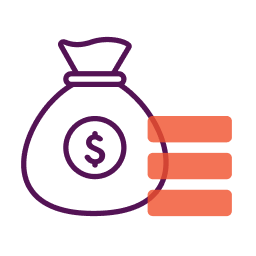On December 22, 2020 Congress passed the stimulus bill which provides for new Paycheck Protection Program loans and other small business relief. It is expected that new forgiveness applications will be released in the future to cover these new loans. Read more about that legislation and apply for a PPP loan here.
If you have questions or concerns about the best way to use PPP loan funds, you’re not alone. What’s more, your concerns are shared all across the country. In fact, in a virtual town hall I joined yesterday with House Speaker Nancy Pelosi, business leaders, chambers of commerce leaders, and other small business groups shared with the Speaker their concerns about the limitations of the PPP and how they aren’t benefiting the very smallest small businesses as much as their larger siblings with 300 or 400 employees.
Nevertheless, there are guidelines for using PPP loan funds to qualify for forgiveness.
Using PPP Loan Funds
As the Paycheck Protection Plan sits right now, the directions from the SBA regarding using PPP loan funds is pretty clear—the funds are intended to cover your payroll expenses for the eight-week period following the first disbursement of funds. In other words, once you have PPP funds in your account, those funds are to be used to fund your payroll for the following two months.
Over the last several weeks as PPP loan applications are being approved and funded, business owners are grappling with the reality that these loans are not working capital loans and are directly tied to payroll; at least if the owner is thinking of forgiveness down the road (which I believe should be a priority). This is particularly true for self-employed solopreneurs and other businesses with only a handful of employees.
What If Laid Off Employees Decline an Offer to Be Rehired?
It’s possible, for many of these small businesses, that employees who were laid off last month might be unwilling or unable to return to work now that the business has PPP funds to put them back on the payroll. A potential problem for a business owner who wants to make sure his or her PPP loan is forgiven when they apply with their lender a couple of months from now.
Fortunately, earlier this week the Treasury offered additional guidance to small business owners concerned about reduced forgiveness for employees who decline to be rehired. Within an FAQ that asks, “Will a borrower’s PPP loan forgiveness amount be reduced if the borrower laid off an employee, offered to rehire the same employee, but the employee declined the offer?” the Treasury responded:
“No. As an exercise of the Administrator’s and the Secretary’s authority under Section 1106(d)(6) of the CARES Act to prescribe regulations granting de minimis exemptions from the Act’s limits on loan forgiveness, SBA and Treasury intend to issue an interim final rule excluding laid-off employees whom the borrower offered to rehire (for the same salary/wages and the same number of hours) from the CARES Act’s loan forgiveness reduction calculation. The interim final rule will specify that, to qualify for this exception, the borrower must have made a good faith, written offer of rehire, and the employee’s rejection of that offer must be documented by the borrower. Employees and employers should be aware that employees who reject offers of re-employment may forfeit eligibility for continued unemployment compensation.”
Not only does this make it possible for small businesses to retain forgiveness should employees choose not to be rehired, it gives those businesses some leverage to bring back staff because the employee runs the risk of losing their unemployment benefits.
Although this implies that a forgiveness amount won’t be reduced because an employee chooses not to return to work, it doesn’t give any insight as to how that will be calculated when your lender reviews your application for forgiveness. Hopefully, when the interim final rule is issued, it will offer a more complete explanation of how that will work.
Which Eight Weeks of Payroll Can PPP Funds Be Used For?
This is a question that repeatedly comes up in one form or another. “Can a business owner use PPP funds as back pay to compensate an employee who continued to work in anticipation of a future PPP loan to pay eight-weeks of wages?” Or, “Can a business hold on to PPP funds to make payroll in June when the business anticipates re-opening?”
Unfortunately for many business owners, the guidance from the SBA on this topic isn’t ambiguous and doesn’t leave room for interpretation:
“The eight-week period begins on the date the lender makes the first disbursement of the PPP loan to the borrower. The lender must make the first disbursement of the loan no later than ten calendar days from the date of loan approval.”
PPP funds are to make payroll during the eight weeks following disbursement of funds. The information cited above is from the most recent FAQ from the Treasury Department dated May 5, 2020.
We have heard from many small business owners over the last several weeks describing their individual circumstances and why this isn’t optimal for them. Unfortunately, the hard facts are that there does not appear to be any exception to this requirement at this time.
What Is Needed to Document Payroll?
When using PPP loan funds for payroll, documenting those expenditures will be important when it comes time to apply for forgiveness. The CARES Act states that you must submit the following documents to your lender with an application requesting forgiveness for your PPP loan, so you should make sure you are thinking in terms of documenting how you spend the loan proceeds.
- Payroll tax filings reported to the Internal Revenue Service
- State income, payroll, and unemployment tax filings
- Documentation, including cancelled checks, payment receipts, transcripts of accounts, or other documents verifying payments on covered mortgage obligations, payments of covered lease obligations, and covered utility payments
- Any other documentation the SBA Administrator determines is necessary.
The SBA guidance also states that, “No eligible recipient shall receive forgiveness under this section without submitting to the lender that is servicing the covered loan the documentation required…”
Documentation Will Be Required by the SBA
PPP funds are intended to cover your payroll expenses for the eight-week period following the first disbursement of the PPP funds. In other words, the clock is ticking and you need to make sure you document every expense as soon as you receive funds—or you could run the risk of losing the loan forgiveness. The lender, according to the SBA, must make the first disbursement within 10 calendar days.
Some business owners are putting the PPP funds in a separate bank account to make tracking and accounting payroll expenses easier. That’s not a requirement. My advice is to establish a practice to ensure you can account for exactly how you used the funds and verify with the documents mentioned above.
Non-payroll expenses cannot exceed 25% of the loan amount to qualify for forgiveness. If you aren’t interested in loan forgiveness, the PPP loan will be a two-year term at 1% interest.
Please note, the material contained in this article is for informational purposes only, is general in nature, and should not be relied upon or construed as a legal opinion or legal advice. Please keep in mind this information is changing rapidly and is based on our current understanding of the programs. It can and likely will change. Although we will be monitoring and updating this as new information becomes available, please do not rely solely on this for your financial decisions. We encourage you to consult with your lawyers, CPAs and Financial Advisors.
This article was originally written on May 6, 2020 and updated on January 11, 2021.


Can the funds be used to purchase necessary equipmen for a. Sole Propriorship Licensed Building Contractor? Also can the funds be used to turn a sole propriorship into a LLC and start hiring it’s 1099 workers into full-time employees, taking taxes out of their checks and obtaining Worker’s Compensation?
Anita – PPP funds are supposed to be used for very specific purposes, including payroll. We can’t speak for the SBA so if you have questions about your specific situation we recommend you reach out to the SBA or an SBA Resource Partner like your SBDC or SCORE. More information on getting help with PPP can be found here.
Thank you for this summary article, it has helped reinforce what I am doing with my PPP Loan Funds. You did not make comment on the use of the funds for FICA (Medicare and Social Security) expenses related to payroll; including the employee and employer portions of FICA that are paid with Federal Payroll Tax Deposits. The original information released by SBA on the PPP Loan indicated that if FICA expenses were paid out of the PPP Loan, those dollars would not be part of the funds forgiven. Is this still the case with the final rulings? Other than that, it is my understanding that all other Payroll Taxes (state and federal), Unemployment taxes, etc. can be paid out of the PPP Loan funds and will qualify for forgiveness.
Thank you.